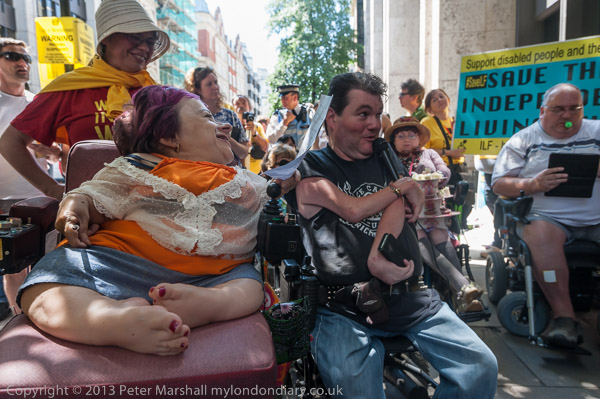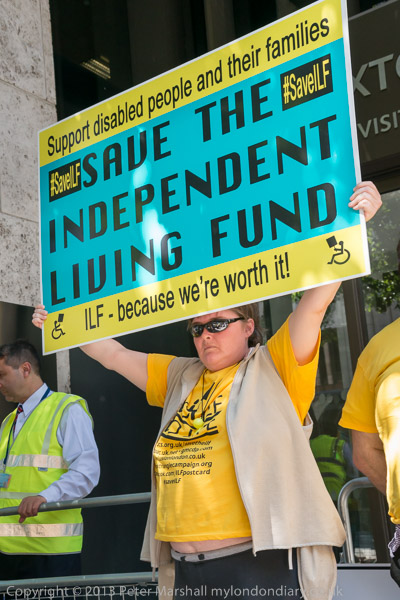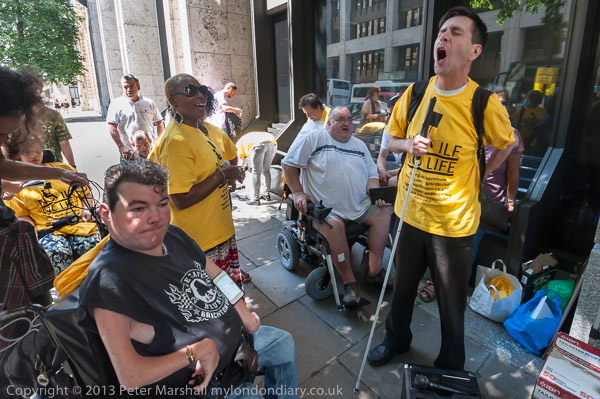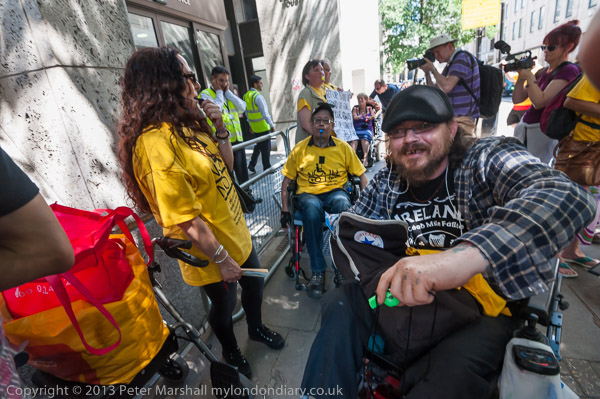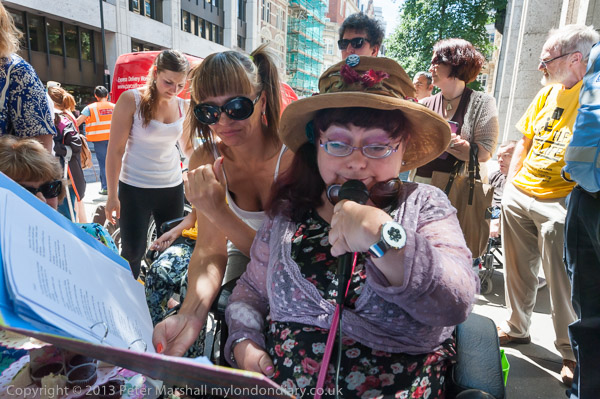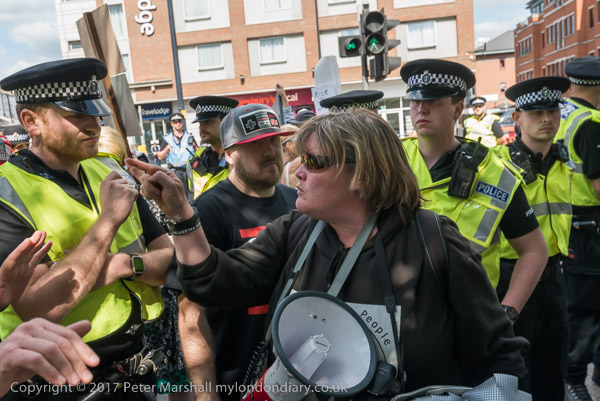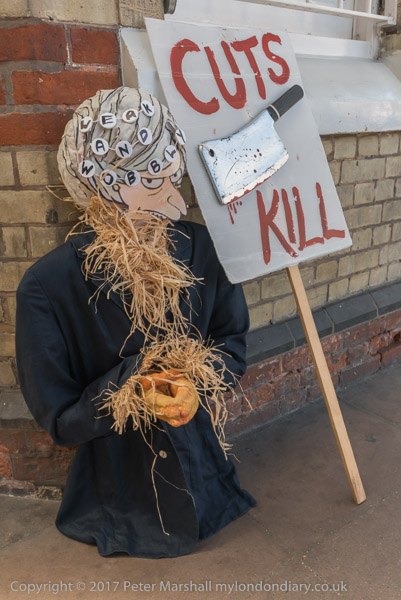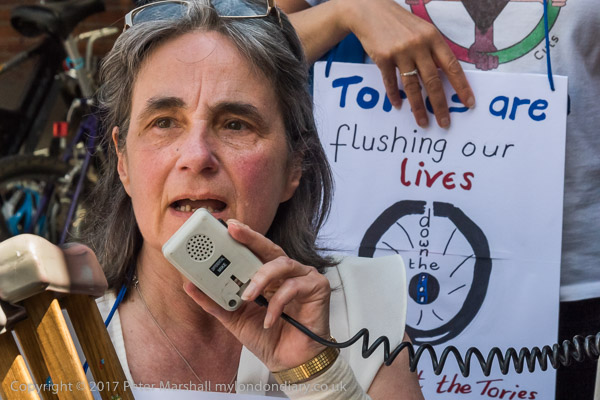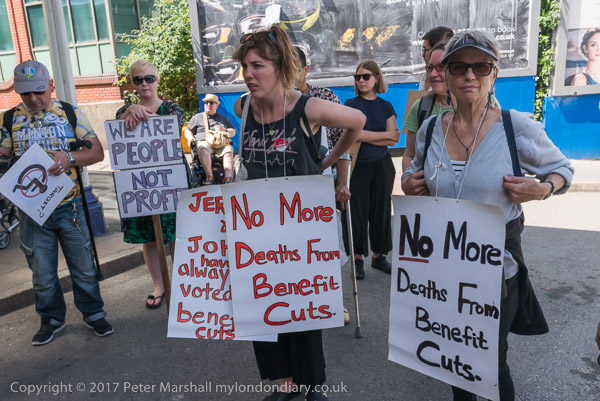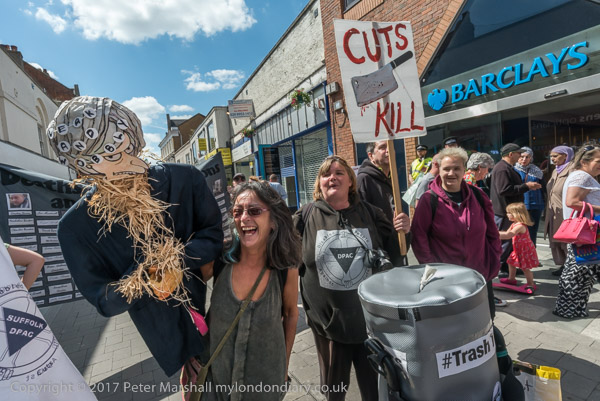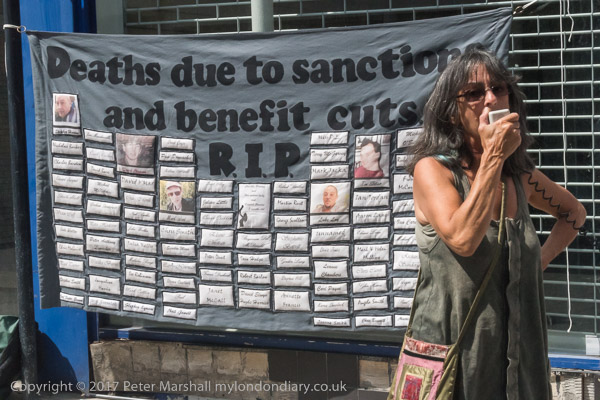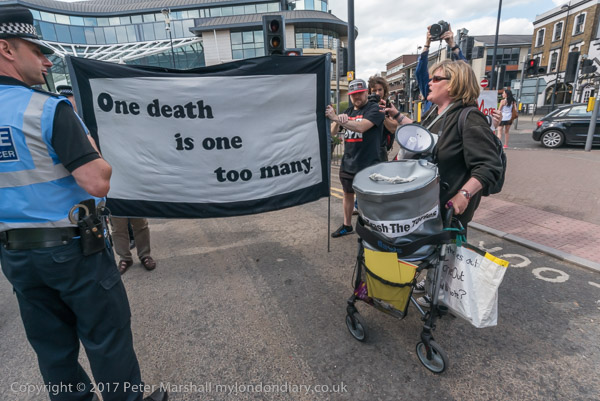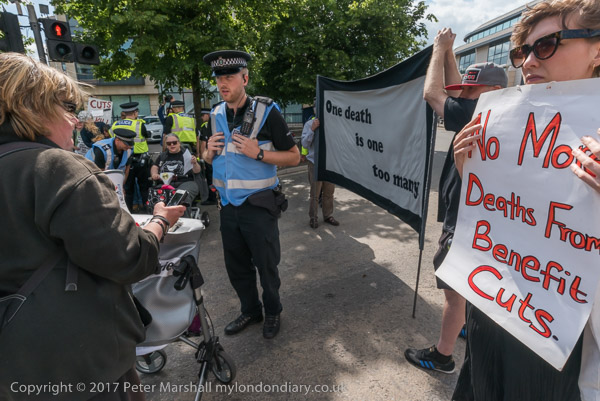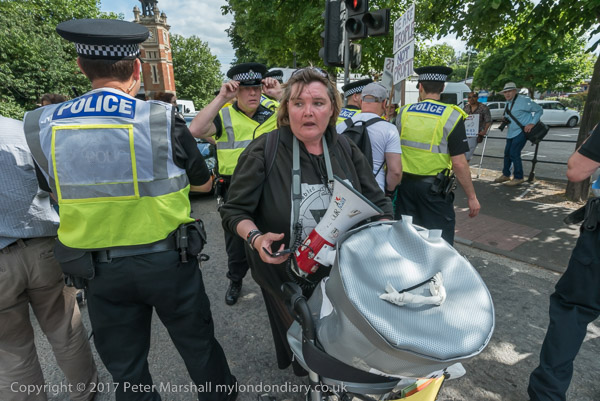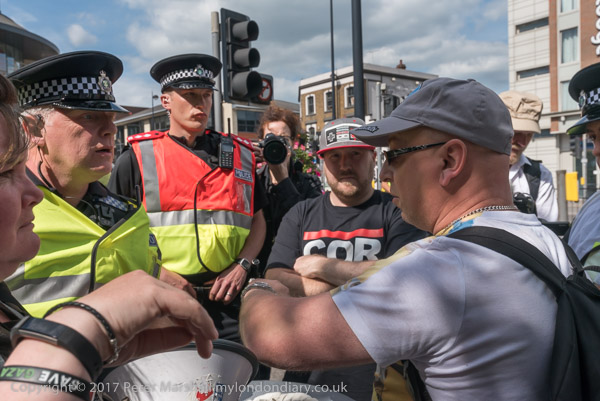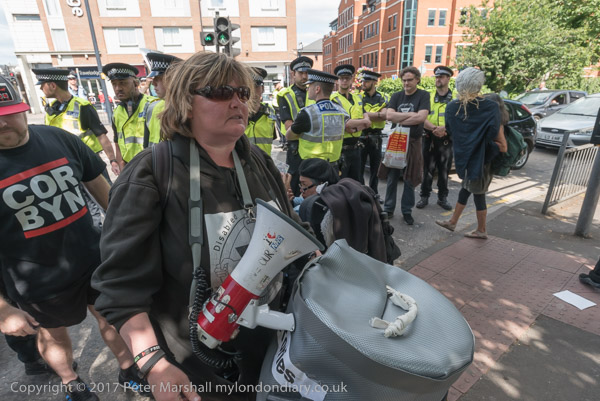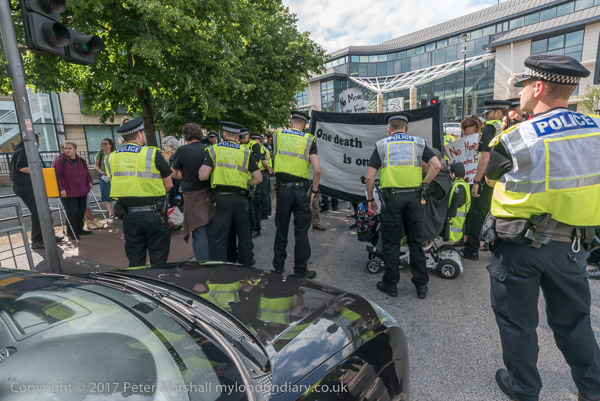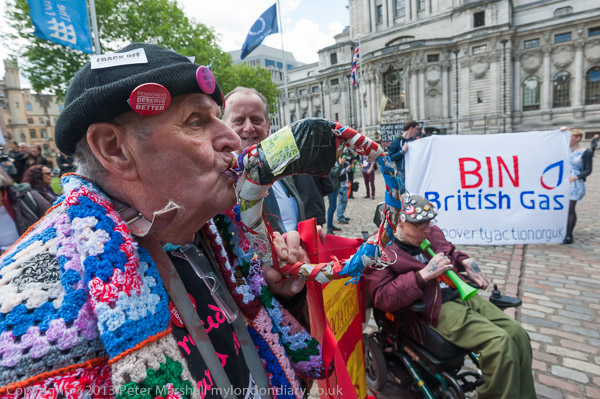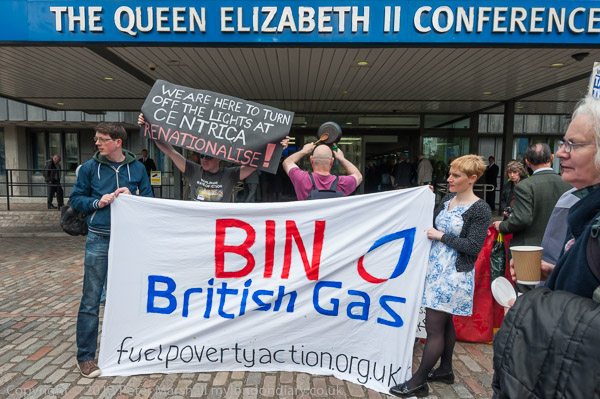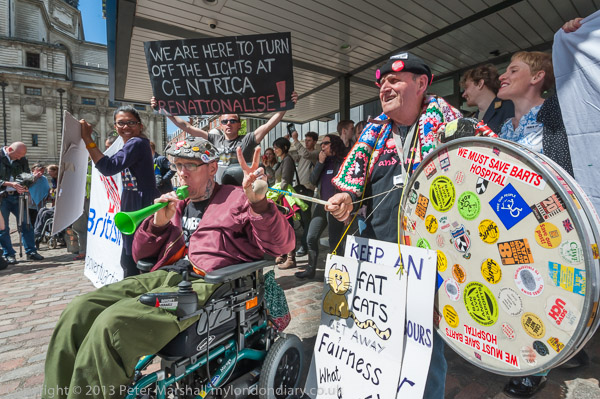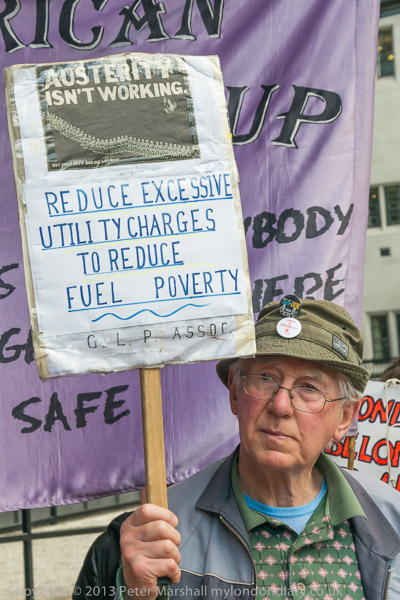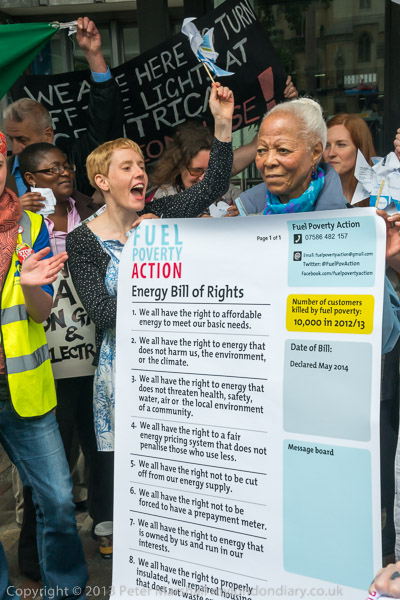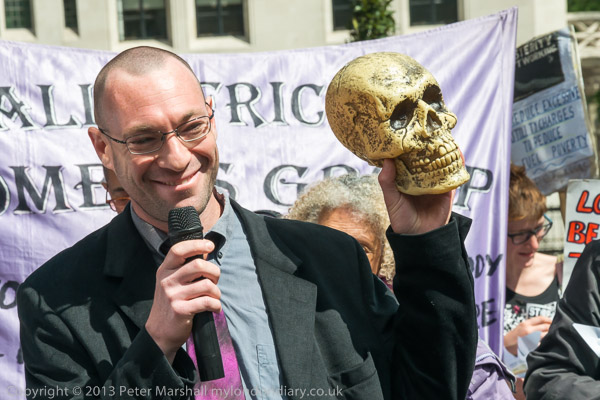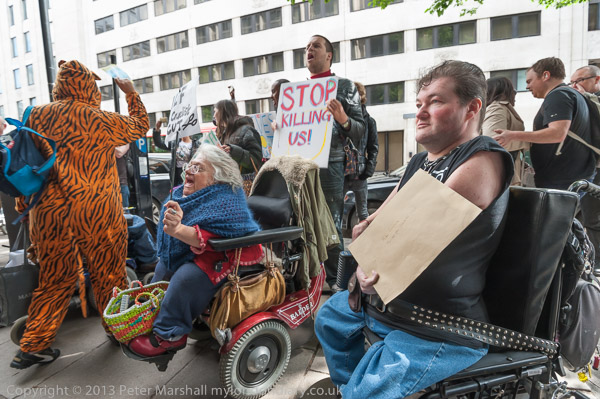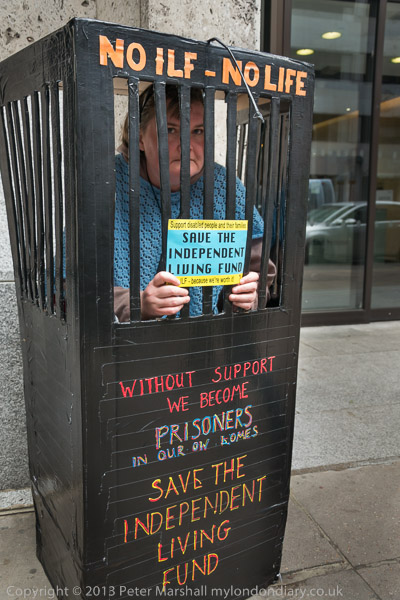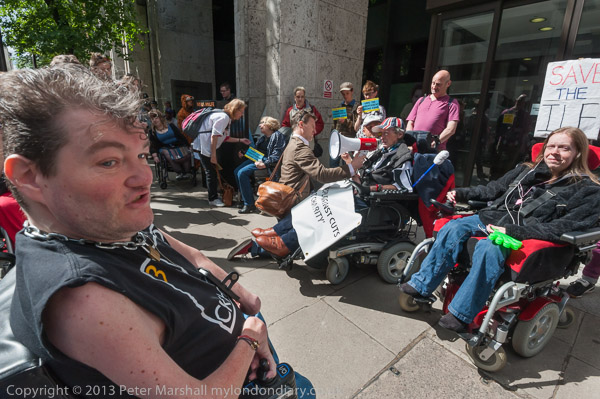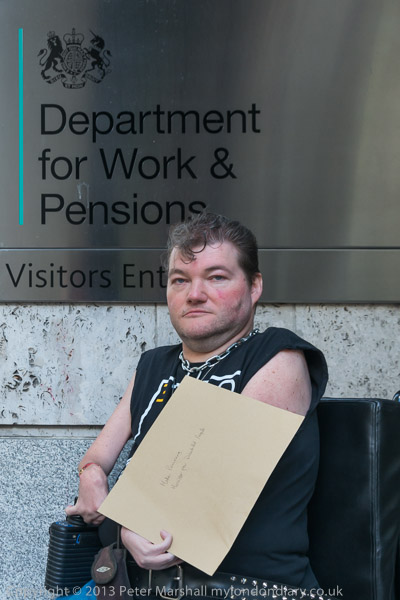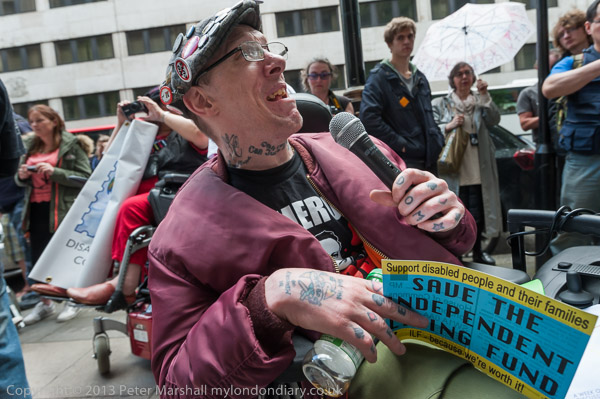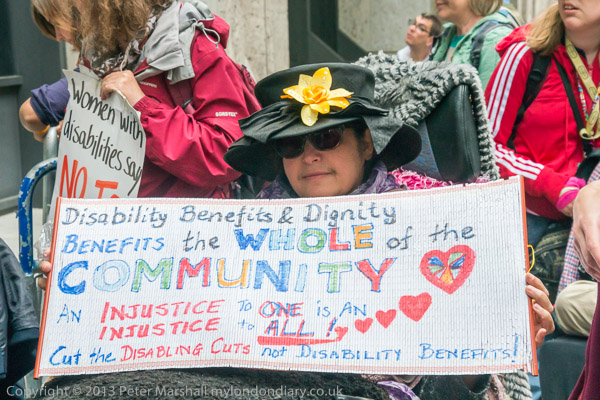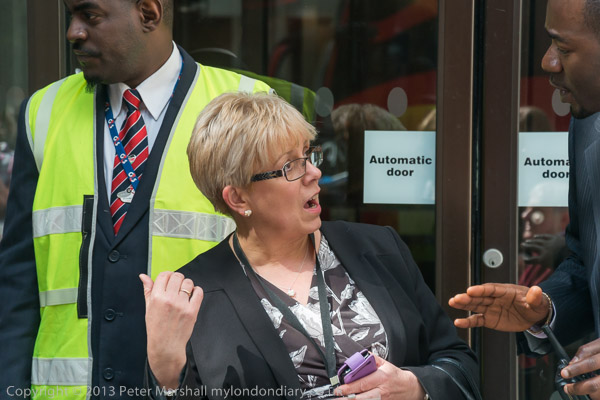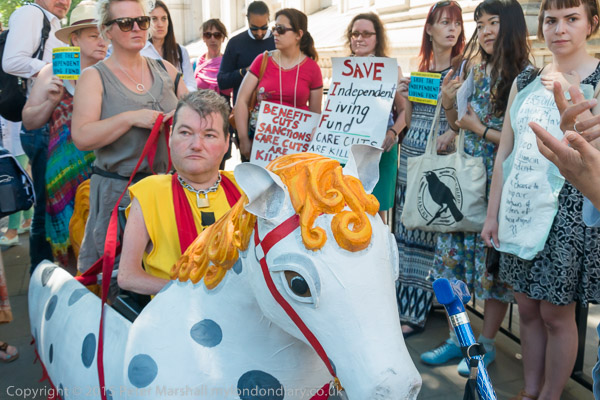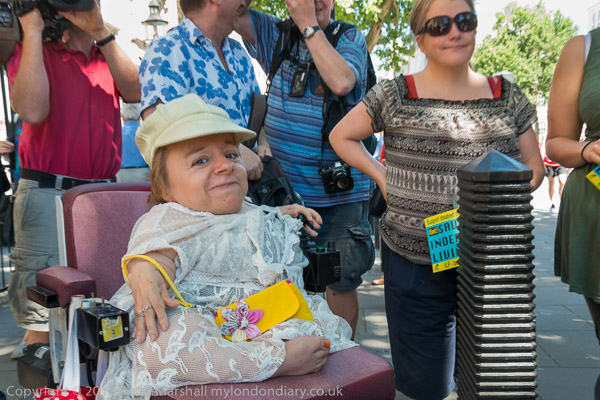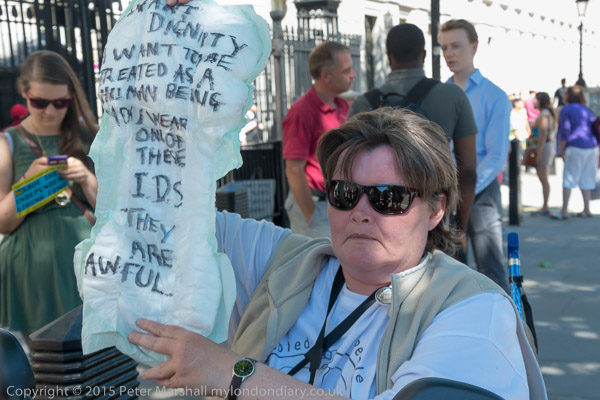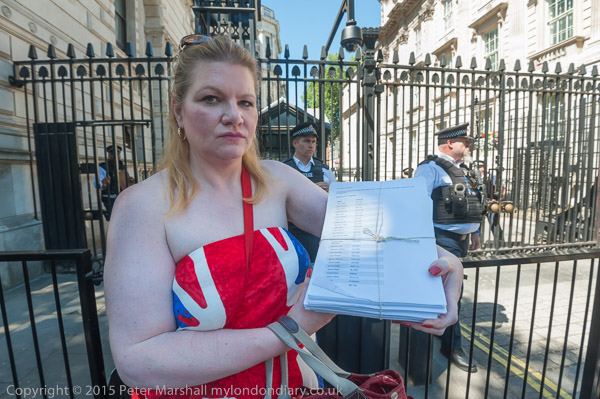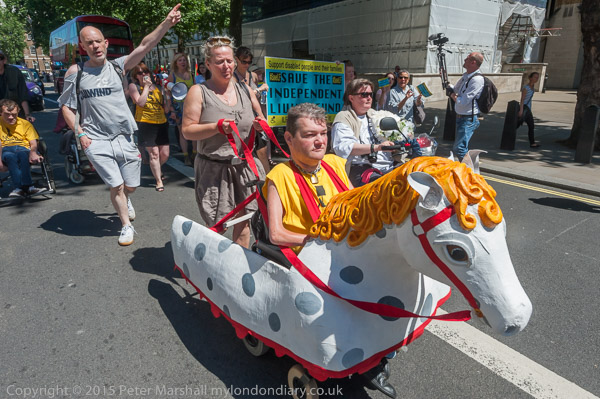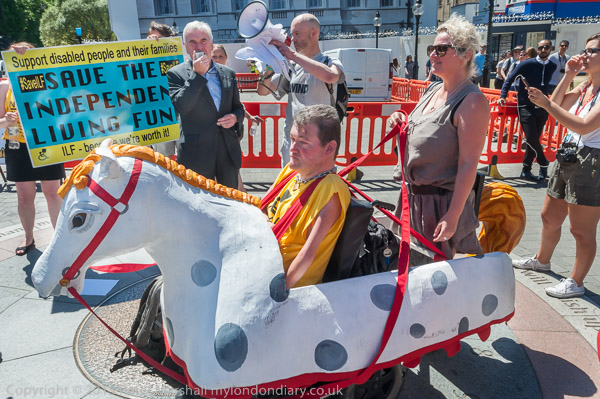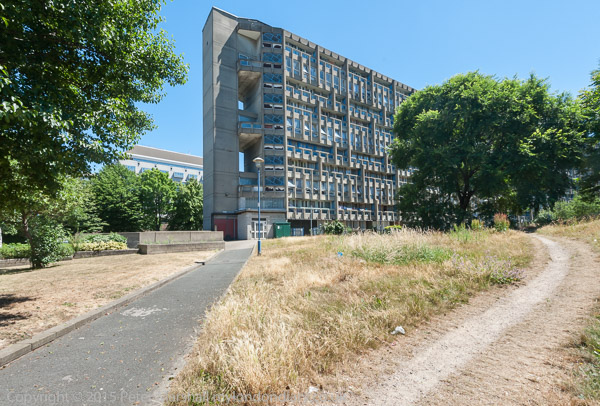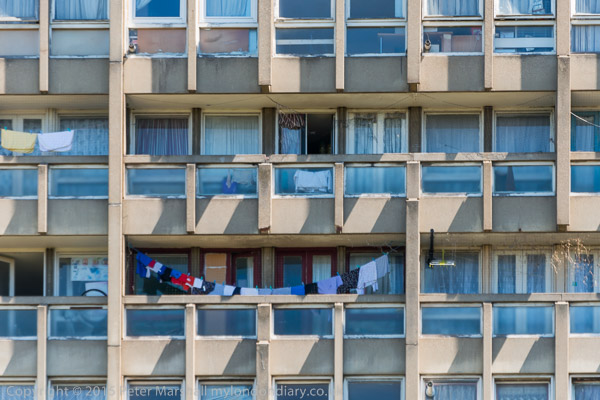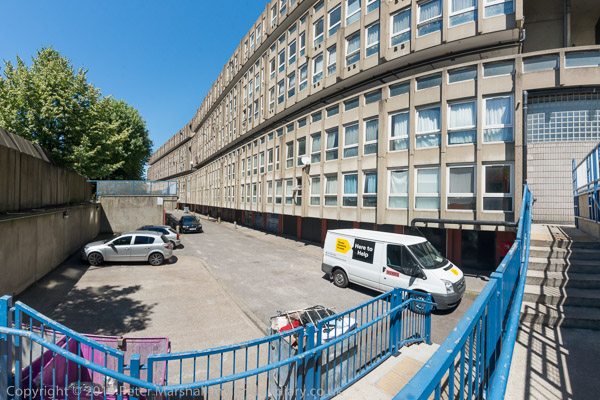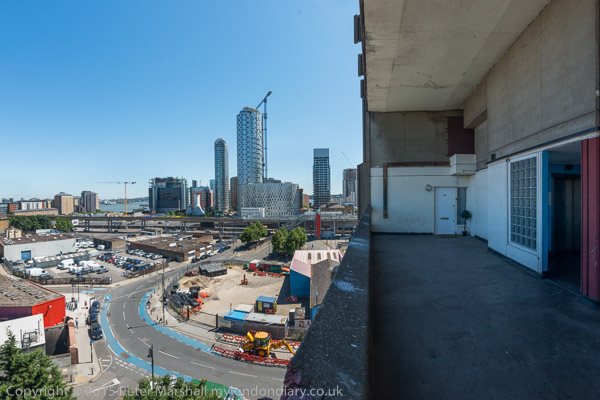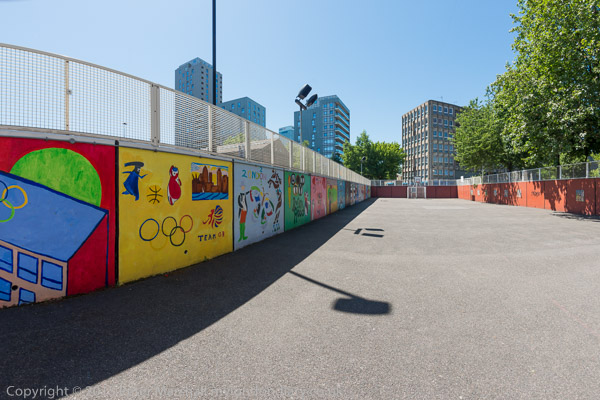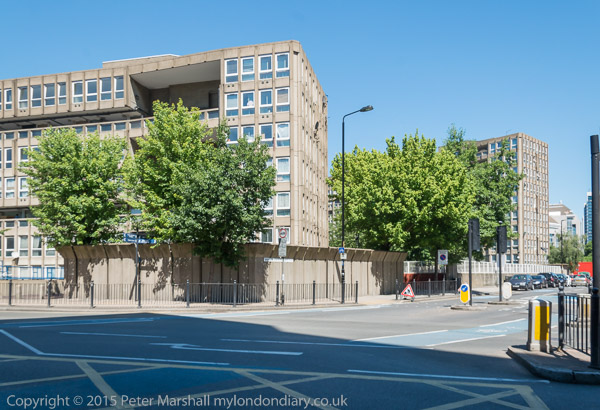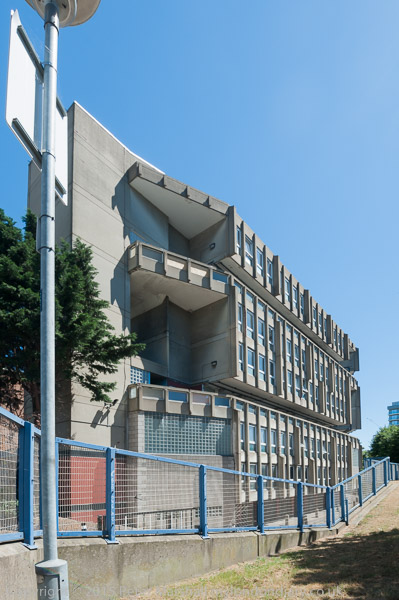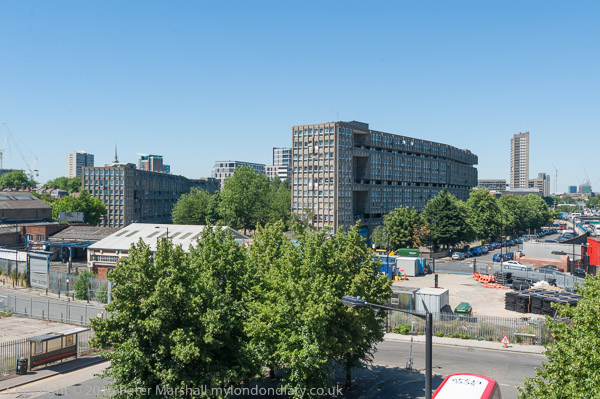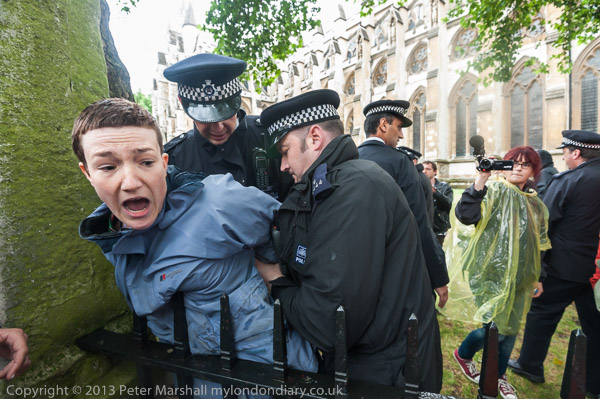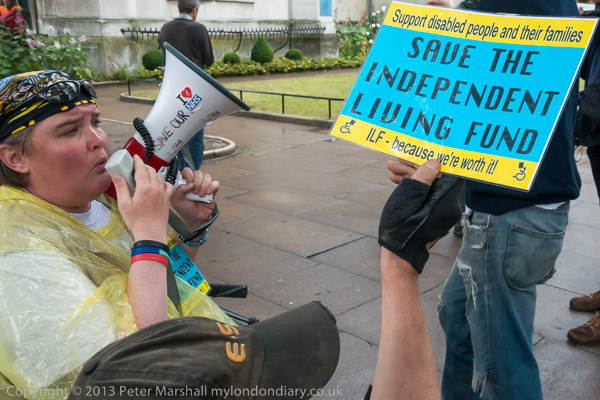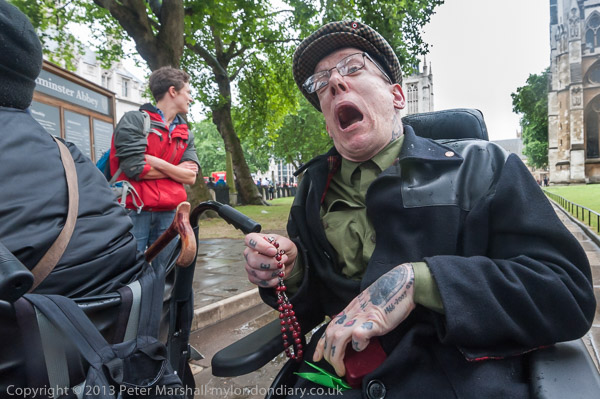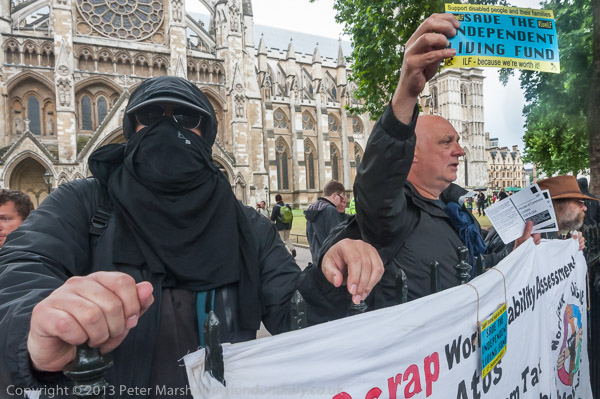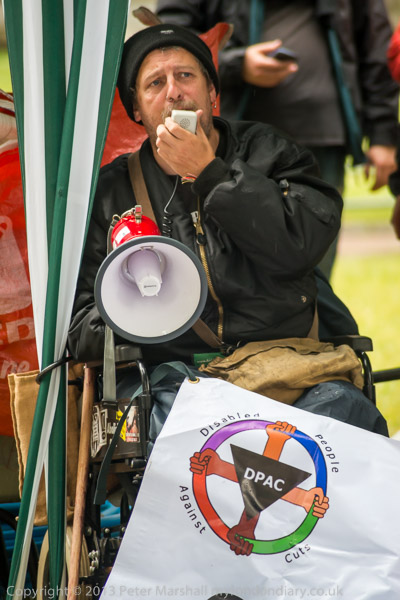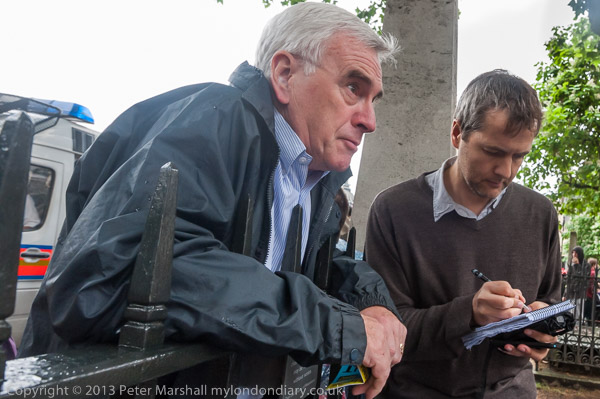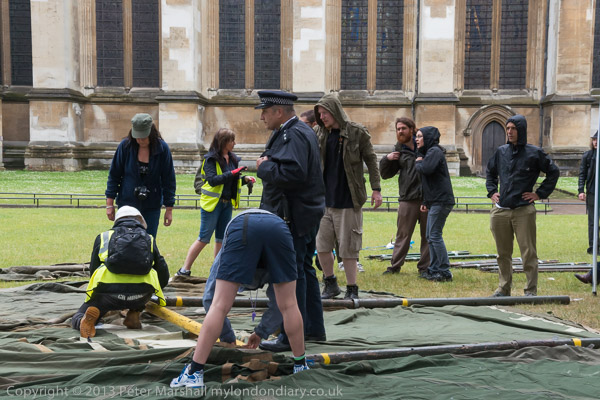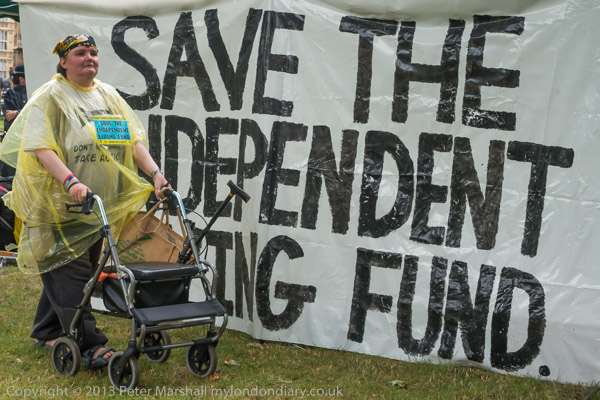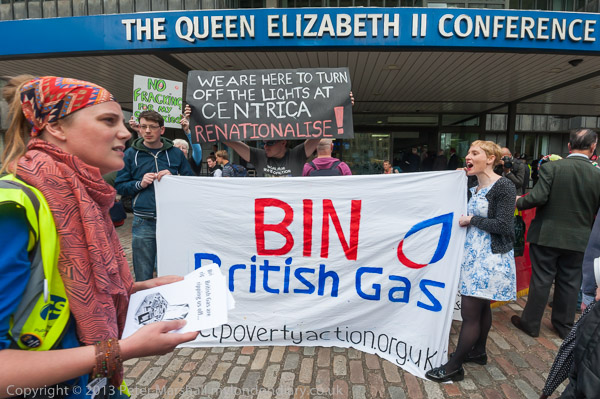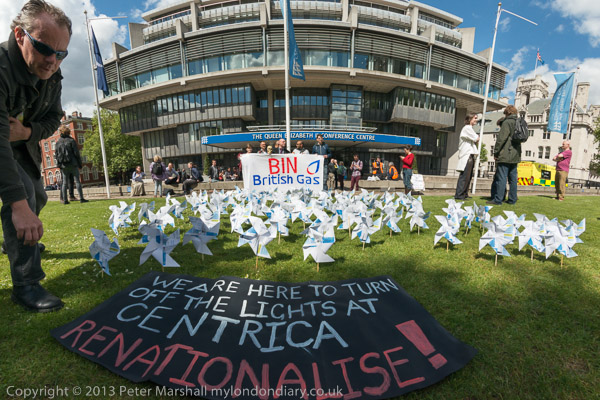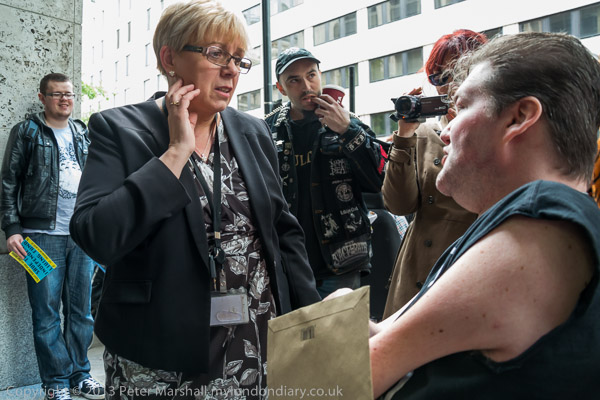Brexit, Inclusion London & Fracking: Protests in Westminster I photographed on Monday 5th September 2016 were for and against Brexit, Disabled People Against Cuts who had been lobbying at Parliament over the Inclusion London report and a vigil by pagans against fracking.
Rival Brexit protests at Parliament
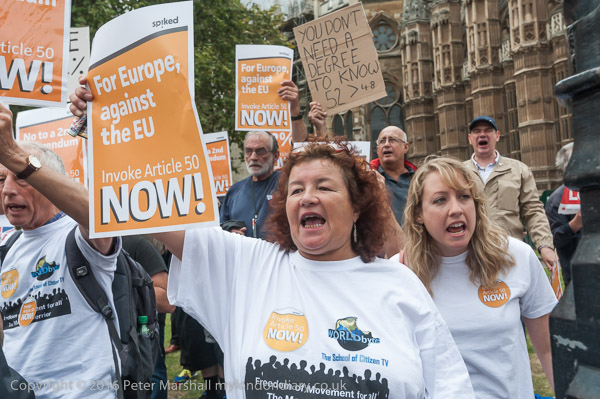
Parliament was debating a petition on the EU referendum signed by over 4 million people calling for a second referendum as there had only been a 52% vote in favour of leaving Europe, with 48% voting against. They argued that this was far too close for such a major constitutional change and at least a 60% vote should have been required for the referedum to be decisive.
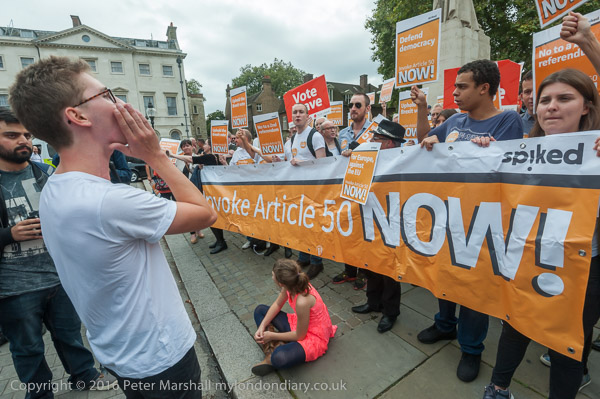
Spiked magazine had organsed a protest by pro-Brexit campaigners in Old Palace Yard and they shouted loudly for Theresa May to ‘Invoke Article 50 Now!
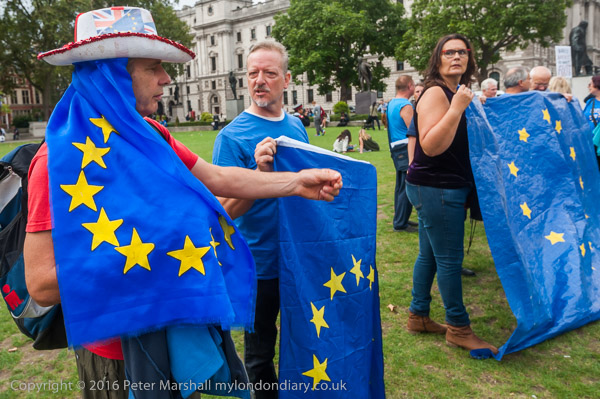
A small group who wanted us to stay in Europe had come to Parliament Square where they held flags and banners.
Rival Brexit protests at Parliament
DPAC against cuts in care & support – Whitehall
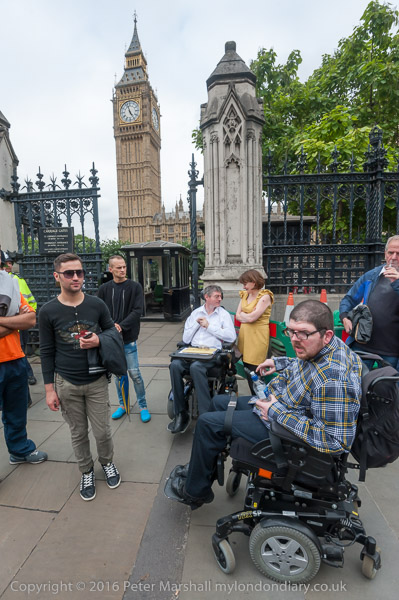
Disabled People Against Cuts (DPAC) had come to Parliament to lobby MPs and to present the Inclusion London report which had highlighted the disastrous effects of cutting care and support funding for personal assistance by the closure of the Independent Living Fund in 2015.
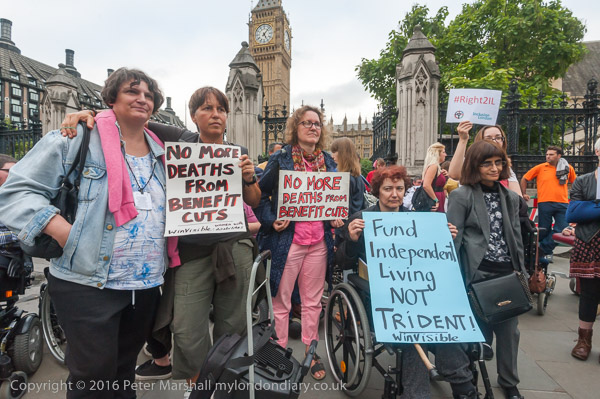
After the lobby they posed on the pavement outside Parliament for photographs and then on the road opposite.
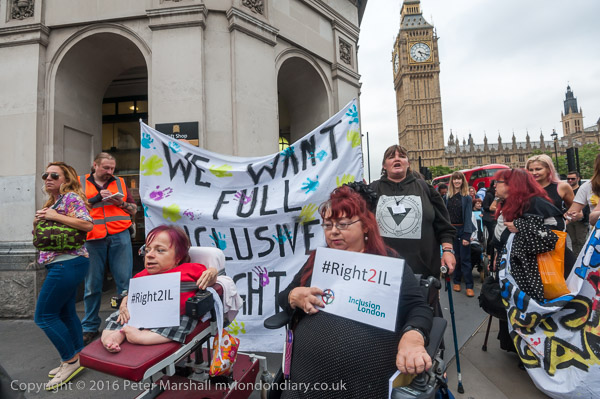
before marching to Downing St.
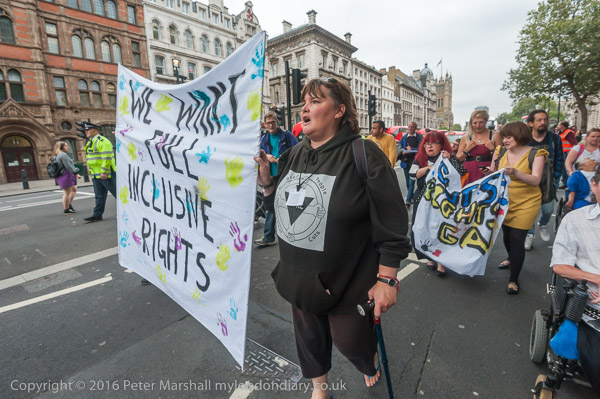
In front of Downing Street the march came to a halt on the roadway.
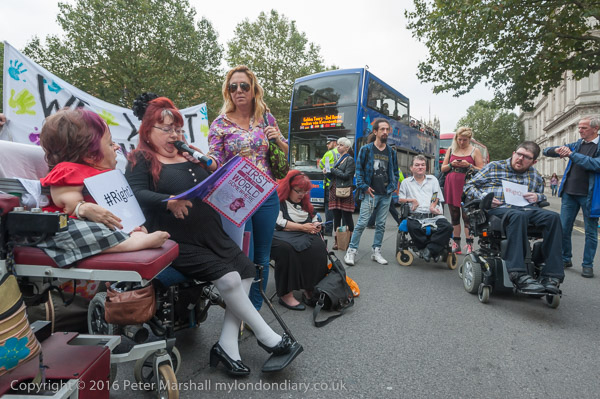
Police directed traffic around them as they held a ‘Pop-Up Street theatre‘ performance there.
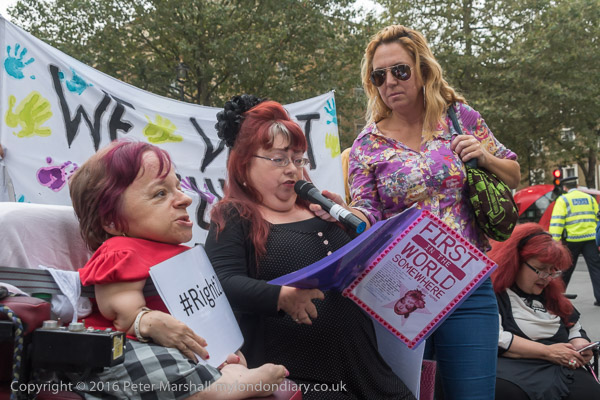
There were short speeches, poetry and songs from some of the DPAC members, showcasing the creativity of disabled people and the contribution they can make to society with proper support.
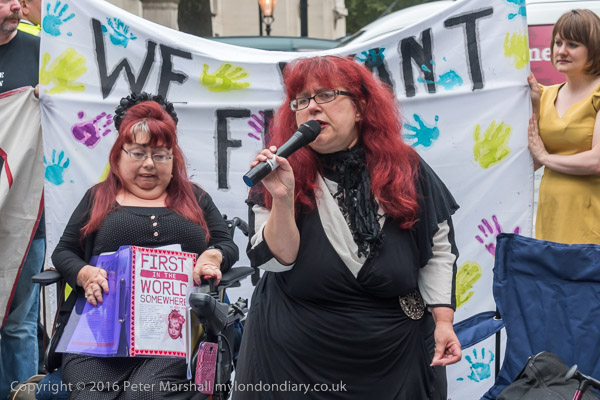
Others talked about their physical and mental health problems and the difficulties that they had suffered because of the closure of the Independent Living Fund.
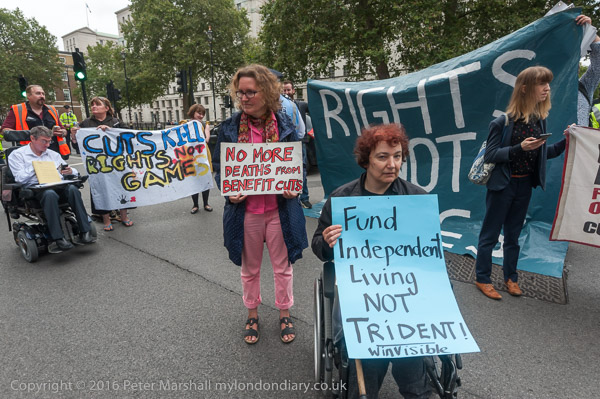
DPAC were supported by other groups and individuals including Winvisible.
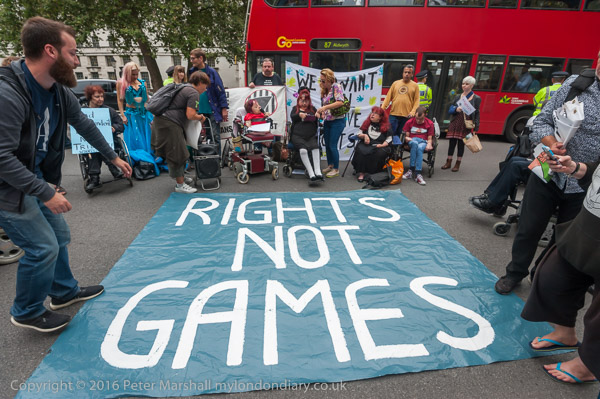
The protest was part of a series of protests at the same time as the Rio Paralympics, and a large banner read ‘Rights Not Games’.
More on My London Diary at DPAC against cuts in care & support.
Druids vigil against fracking – Whitehall

On the other side of Whitehall opposite Downing Street pagans were staging a 24 hour vigil against fracking.

Pagans believe that nature is sacred and find spiritual meanings in natural cycles of birth, growth and death and Druidic and other rituals are linked to the seasons. Humans, animals, trees, plants and all of the earth are part of nature, and fracking disrupts the natural order.

A banner with a tree had the message ‘Druids against Fracking – One (heart) for Mother Earth‘ while another had more esoteric symbols with the message ‘We are Nature protecting ourselves‘. One of the Druids was wearing a t-shirt with the sigil ‘The Warriors Call‘, a magic symbol widely adopted as an anti-fracking device.
Flickr – Facebook – My London Diary – Hull Photos – Lea Valley – Paris
London’s Industrial Heritage – London Photos
All photographs on this page are copyright © Peter Marshall.
Contact me to buy prints or licence to reproduce.
